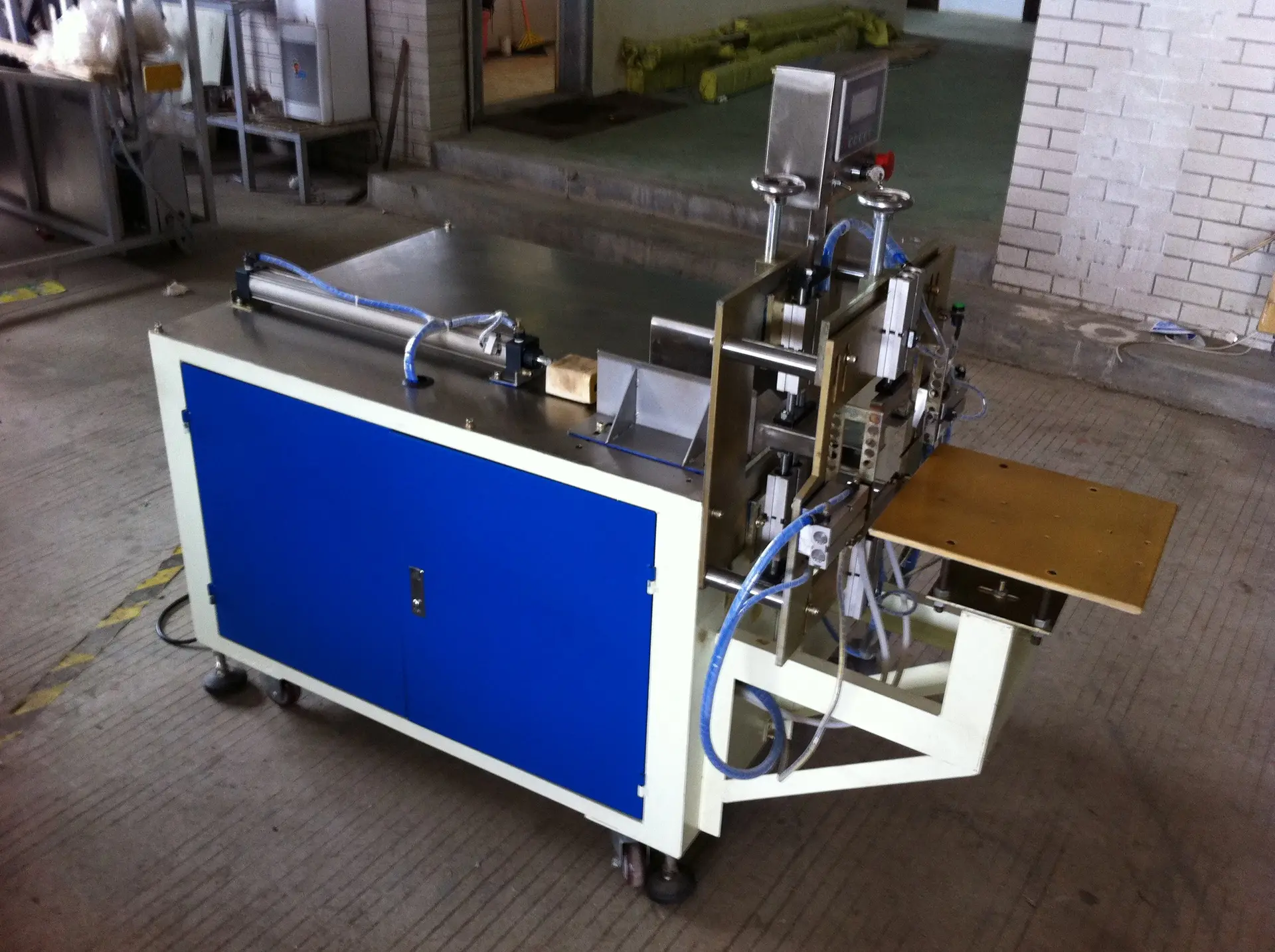Semi-automatic sanitary napkin machine disassembly principles and precautions.
1.1 Before disassembly, you should thoroughly study the structure, characteristics and working principle of semi-automatic sanitary napkin machine, carefully read the assembly diagram and understand the assembly relationship. Correctly master the disassembly method.
1.2 In the case of not affecting the replacement of parts, other parts can not be disassembled, can be less disassembled on less disassembly.
1.3 Follow the disassembly procedure flow and choose the disassembly process. Generally from the whole machine to parts, from parts to parts, from outside to inside.
1.4 Pay special attention to operational safety. Prevent the machine from losing balance and tipping over when unloading a part.
1.5 For some parts that cannot be exchanged or have complicated structure and easy to make mistakes in direction, they should be marked according to the original parts before disassembly. Precision parts should be stored in subassembly after disassembly.
1.6 When choosing and using disassembly tools, use proper special tools as much as possible, and do not knock and pound at will. When disassembling parts by direct hit with a hammer, copper or hardwood should be used as a pad. It is better to soak the connection with lubricant before disassembly. Parts that are not easy to disassemble can be soaked or dipped in kerosene.
1.7 Store the disassembled parts, paying special attention not to touch the processing surface layer of the disassembled parts, screws and shaft parts, and hang them on the shelf after oiling to avoid rusting and deformation. Disassembled parts should be neatly placed by parts classification, even parts should be printed and stored in pairs, and mark the specific location requirements of the assembly. It is important that precision parts should be stored separately.
1.8 Disassembly must be in a cleaned workplace. It is strictly forbidden to carry out in a dusty place, high temperature and humidity; if carried out in the open air, dustproof, moisture-proof and rain-proof measures must be taken.

1.9 When dismantling screws, bolts and nuts, choose proper wrenches and torque wrenches, and try not to use live wrenches. It is strictly forbidden to use pipe pliers or lengthen the wrench handle with a sleeve to prevent unscrewing the nuts and bolts.
1.10 When dismantling double-headed bolts, special tools should be used or tightened with two nuts, and loading and unloading with pipe wrenches is strictly forbidden.
1.11 After removal, belongs to the intact screws, nuts and bolts, where it does not prevent parts processing, should be immediately installed back to the original place to avoid damage or loss.
1.12 nut rust can not be removed in the normal way, can be handled as follows.
(1) first tighten the nut 1/4 turn, and then screw out.
(2) Tap with a hand hammer to make the rust skin peel off and then screw out.
(3) Pay special attention to a small amount of kerosene and tighten it after 20~30 minutes. For threads that transmit power alone and tighten by themselves, soak them in kerosene for more than 4 hours and then screw them out.
(4) Screw out the nut by baking hot with a blowtorch or oxygen welding.
1.13 The broken screw stump in the screw hole can be removed by the following methods.
(1) Drill a hole in the center of the residual section, hit the thread in the opposite direction, then screw in the opposite direction and screw out the residual part.
(2) Drill a small hole in the center of the residual section, tap into the hole with a quenched and hardened four-pronged tapered steel rod, and then screw out the screw residue.
(3) Weld the bolt or square-headed iron rod to the residual section and reverse screw out the residual part.
(4) The above methods are ineffective, you can drill out the residual part, and increase the diameter of the threaded hole.
1.14 demolition of bushings, pins, gears, pulleys, rolling bearings and other mating parts, should use special demolition tools or soft hand hammer and other tools. You can also pad the parts with a shim that is softer than the parts, and then tap. It is strictly forbidden to hit the parts directly with a steel hand hammer.
1.15 Disassemble the static parts and heat the hole parts or cool the shaft parts if necessary. But the heating temperature shall not exceed 500 ℃, quenched steel parts shall not be higher than the tempering softening temperature (bearing 140 ℃), aluminum alloy parts shall not exceed 200 ℃.
1.16 Configuration of sealed instruments, insurance devices, etc., no special circumstances during minor repairs, disassembly is strictly prohibited.
1.17 After the completion of disassembly work, to do three clear, site cleanup, equipment cleanup, tool cleanup.
Comment(0)
You can comment after
SIGN IN